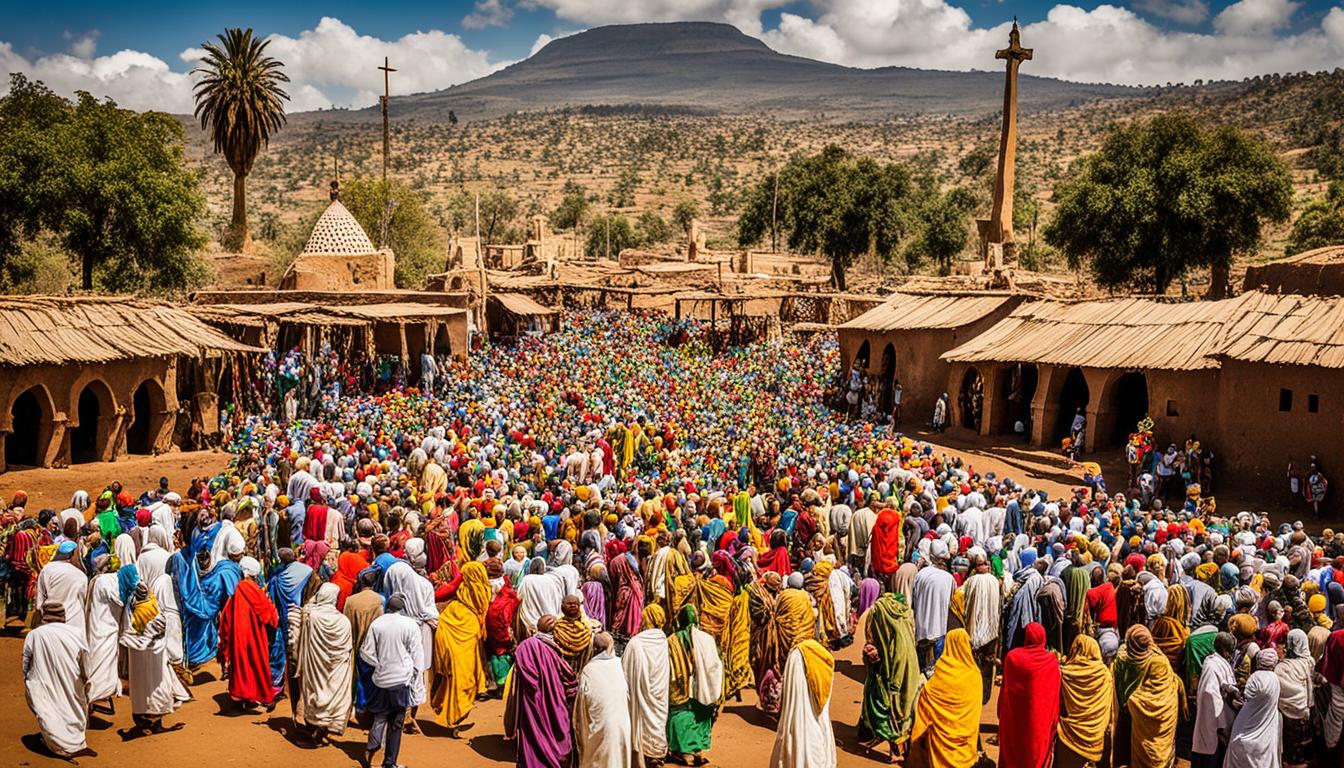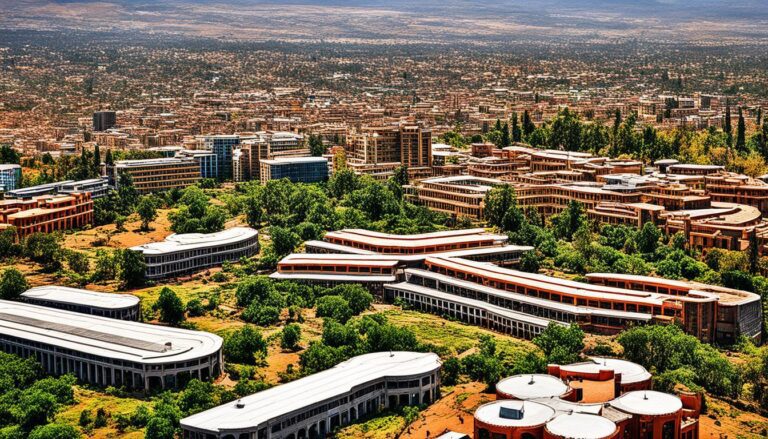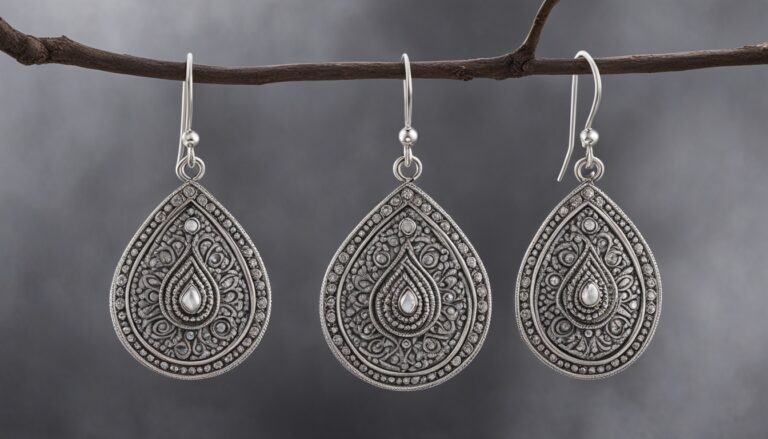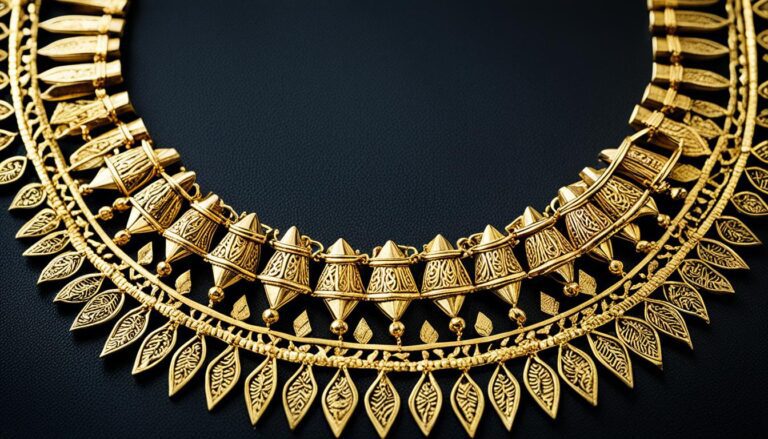How Many Religion in Ethiopia?
Did you know that Ethiopia is home to a remarkable variety of religions? It’s not just a single predominant faith, but a tapestry of different religious beliefs and practices. According to recent statistics, Ethiopia is a land of religious diversity, with several major religions coexisting side by side.
Key Takeaways:
- Ethiopia is renowned for its religious diversity, with multiple major religions present within the country.
- The majority religion in Ethiopia is Christianity, with Ethiopian Orthodoxy being the largest denomination.
- Islam holds a significant presence in Ethiopia, particularly in the eastern and southern regions.
- Traditional African religions are also practiced by indigenous communities in various parts of the country.
- The distribution of religions often aligns with the ethnic composition of different regions in Ethiopia.
Christianity in Ethiopia
Christianity has a long-standing presence in Ethiopia and is the predominant religion in the country. The Ethiopian Orthodox Church, also known as Ethiopian Orthodoxy, holds the largest number of followers among Christian denominations in Ethiopia. It is deeply rooted in the country’s cultural and historical fabric, shaping the lives of millions of Ethiopians.
The Ethiopian Orthodox Church traces its origins back to the 4th century AD, making it one of the oldest Christian churches in the world. Its teachings are based on both the Old and New Testaments of the Bible, and its rituals and ceremonies incorporate unique Ethiopian traditions.
P’ent’ay Christianity, which encompasses various Protestant denominations, is another significant branch of Christianity in Ethiopia. It emerged in the 19th century and has since gained a substantial following, particularly among the younger population. P’ent’ay Christianity emphasizes personal faith, evangelism, and worship.
“Christianity in Ethiopia is not just a religion; it is deeply intertwined with our culture, identity, and way of life. The Ethiopian Orthodox Church has played a pivotal role in shaping our history and providing spiritual guidance to our people for centuries.”
Roman Catholicism is also present in Ethiopia, albeit on a smaller scale compared to Ethiopian Orthodoxy and P’ent’ay Christianity. It has roots dating back to the 16th century, with Portuguese missionaries being instrumental in its establishment. The Catholic community in Ethiopia contributes to the diverse tapestry of Christian traditions within the country.
Christian Denominations in Ethiopia
| Denomination | Percentage of Christian Population |
|---|---|
| Ethiopian Orthodoxy | 45% |
| P’ent’ay Christianity | 30% |
| Roman Catholicism | 5% |
| Other Christian Denominations | 20% |
Christianity has deeply influenced Ethiopian culture, art, music, and literature. The religious practices and beliefs of Ethiopian Christians are intertwined with their daily lives, marking significant events such as births, weddings, and funerals. Churches and monasteries hold a central place in Ethiopian towns and villages, serving as gathering places for worship, education, and community support.
The enduring presence of Christianity in Ethiopia reflects the strong spiritual connection of its people to their faith and its profound impact on their lives, marking Ethiopia as a unique haven of diverse Christian traditions.
Islam in Ethiopia
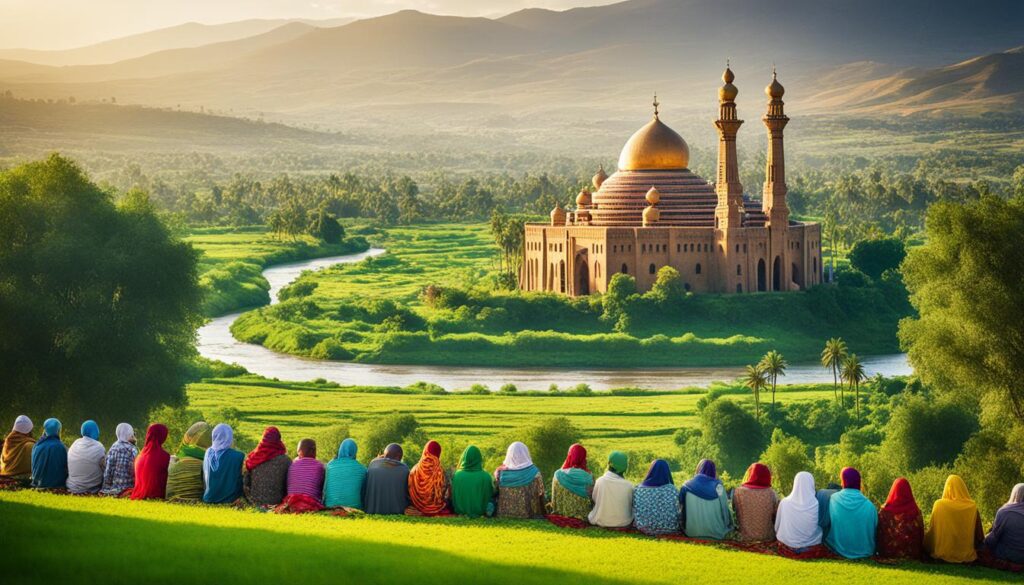
Islam holds a significant place within the religious tapestry of Ethiopia, particularly in the eastern and southern regions. As the country’s second-largest religion, Ethiopian Muslims play an integral role in the nation’s cultural fabric and its history.
The majority of Ethiopian Muslims adhere to Sunni Islam, following the teachings of the Prophet Muhammad and the traditions of the early Muslim community. Sunni Islam’s principles and practices guide their spiritual journey, providing a sense of belonging and purpose within their faith.
The roots of Islam in Ethiopia can be traced back to the 7th century, when Muslims sought refuge from Meccan persecution in the country. Known as the “Hijra,” this historic event marked the migration of Muslims to Ethiopia under the protection of the Christian ruler, Negus Ashama ibn Abjar.
The influence of Islam in Ethiopia extends beyond religious life. It has left an indelible mark on the country’s architecture, art, language, and cultural practices. From the magnificent mosques dotting the landscape to the vibrant celebrations during Islamic holidays, the impact of Islam can be felt throughout Ethiopian society.
Islamic history holds a prominent place in Ethiopia, intertwining with the broader narrative of the nation’s diverse religious landscape. The coexistence of Islam alongside Christianity and indigenous African religions serves as a testament to Ethiopia’s longstanding tradition of religious tolerance and pluralism.
Contributions to Ethiopian Society
Ethiopian Muslims have made significant contributions to various fields, including education, politics, and the arts. Islamic educational institutions, such as mosques and madrasas, have played a crucial role in imparting knowledge and fostering intellectual growth within the Muslim community.
Politically, Ethiopian Muslims have actively participated in the country’s democratic processes, advocating for their rights and upholding the principles of justice and equality. Their voices contribute to the broader national dialogue, shaping the social and political landscape of Ethiopia.
In the artistic realm, the influence of Islamic aesthetics can be observed in Ethiopian calligraphy, music, and traditional crafts. The intricate designs and motifs reflect a fusion of Islamic and Ethiopian cultural elements, resulting in a unique artistic expression.
Islamic Organizations and Institutions in Ethiopia
Ethiopia is home to various Islamic organizations and institutions that cater to the religious and social needs of the Muslim community. These organizations provide essential services, including education, healthcare, and humanitarian assistance.
One of the prominent Islamic institutions in Ethiopia is the Ethiopian Islamic Affairs Supreme Council (EIASC), which serves as the central governing body for Islamic affairs in the country. The EIASC works to promote unity, cooperation, and the well-being of Ethiopian Muslims.
Additionally, mosques serve as community centers, offering a space for worship, education, and social gatherings. They are not only places of spiritual devotion but also hubs for community engagement and support.
| Islamic Organizations and Institutions | Description |
|---|---|
| Ethiopian Islamic Affairs Supreme Council (EIASC) | The central governing body for Islamic affairs in Ethiopia, responsible for promoting unity, cooperation, and the well-being of Ethiopian Muslims. |
| Mosques | Serve as community centers, offering a space for worship, education, social gatherings, and community engagement. |
| Islamic educational institutions | Include madrasas and schools that provide Islamic education and promote intellectual growth within the Muslim community. |
| Charitable organizations | Engaged in providing essential services such as education, healthcare, and humanitarian assistance to the Muslim community. |
Traditional Religions in Ethiopia
In addition to Christianity and Islam, Ethiopia is a country rich in religious diversity, with various traditional religions practiced by indigenous communities. These traditional religions, rooted in the culture and beliefs of the Ethiopian people, coexist alongside the dominant Abrahamic religions, adding a unique and vibrant aspect to the country’s religious landscape.
The traditional religions in Ethiopia are closely tied to the indigenous African beliefs and practices that have been passed down through generations. They are predominantly found in the southwestern and western parts of the country, where these communities reside.
These indigenous African religions in Ethiopia encompass a wide range of spiritual beliefs and practices, often involving ancestral worship, nature worship, ritual ceremonies, and the veneration of deities and spirits. They play a significant role in the lives of the people who follow them, shaping their cultural identity, social structures, and worldview.
Despite the influences of Christianity and Islam, the traditional religions in Ethiopia have managed to retain their authenticity and continue to be cherished by the communities that practice them. These religions serve as a link to the country’s ancient past, connecting the present-day Ethiopian people with their rich cultural heritage and traditions.
“The traditional religions in Ethiopia are a testament to the religious diversity and cultural richness of the country.”
The presence of traditional religions alongside Christianity and Islam reflects the religious diversity that defines Ethiopia. This multicultural tapestry of faiths contributes to the country’s unique identity and reinforces the notion of religious tolerance and coexistence.
As Ethiopia continues to evolve and embrace modernity, it is crucial to recognize and appreciate the traditional religions and the communities that uphold them, ensuring that their cultural heritage remains preserved for future generations.
| Religion | Region of Predominance |
|---|---|
| Ethiopian Orthodox Christianity | Tigray and Amhara |
| P’ent’ay Christianity (Protestantism) | Southern Nations, Nationalities, and Peoples Region (SNNPR) and Oromia Region |
| Islam | Afar, Oromia, and Somali |
| Traditional Religions | Southwestern and Western Ethiopia |
Religious Demographics and Ethnic Groups
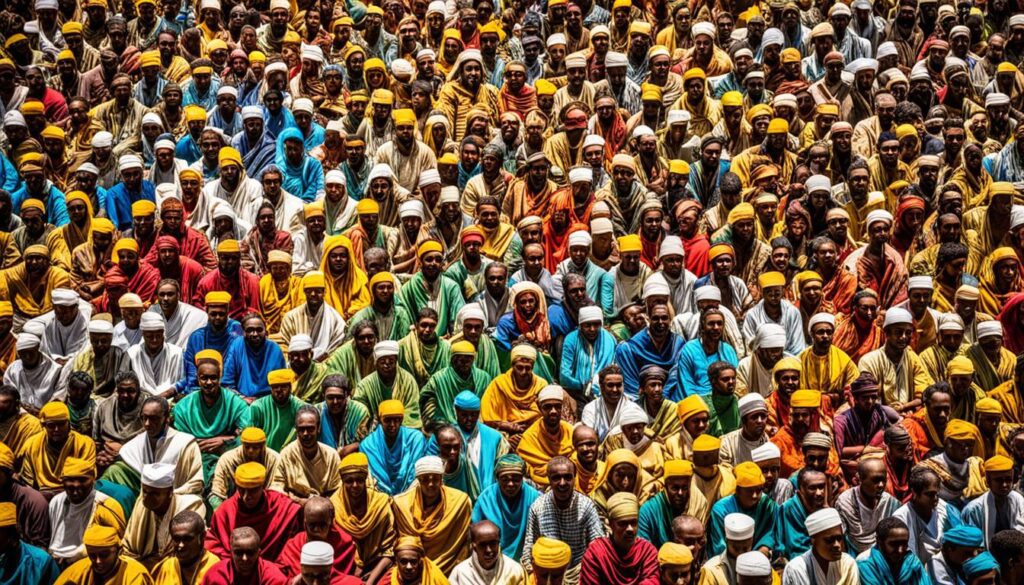
The religious landscape in Ethiopia is intricately intertwined with its diverse ethnic makeup. Different ethnic groups in Ethiopia often have distinct religious affiliations, contributing to the rich tapestry of religious diversity in the country. Let’s explore the religious distribution among various ethnic groups.
Tigray and Amhara Ethnic Groups: Ethiopian Orthodox Church
The Tigray and Amhara ethnic groups in Ethiopia have a strong presence of followers of the Ethiopian Orthodox Church. This denomination of Christianity is deeply ingrained in their cultural and historical identities.
Southern Nations, Nationalities, and Peoples Region (SNNPR) and Oromia Region: Protestants
The Southern Nations, Nationalities, and Peoples Region, as well as the Oromia Region, are home to a large concentration of Protestant followers. The Protestant denominations have gained significant traction in these regions.
Afar, Oromia, and Somali Regions: Islam
The Afar, Oromia, and Somali regions in Ethiopia have a significant Muslim population. Islam is the predominant religion in these areas, reflecting the influence of historical and cultural factors.
While the religious distribution aligns with the ethnic composition of different regions, it’s essential to note that religious diversity is prevalent across Ethiopia. The table below provides an overview of the religious demographics among select ethnic groups in the country:
| Ethnic Group | Major Religion |
|---|---|
| Tigray | Ethiopian Orthodox Church |
| Amhara | Ethiopian Orthodox Church |
| Southern Nations, Nationalities, and Peoples Region (SNNPR) | Protestantism |
| Oromia | Protestantism |
| Afar | Islam |
| Somali | Islam |
The ethnic groups mentioned in the table are just a few examples, and the religious landscape is more complex and diverse, reflecting the country’s multicultural fabric.
Conclusion
Ethiopia’s religious landscape is a testament to its remarkable religious diversity. With a rich tapestry of Christian denominations, Islam, traditional African religions, and other faiths, the country reflects a cultural heritage that has fostered religious coexistence and tolerance throughout its history.
From the dominant Ethiopian Orthodoxy to the flourishing P’ent’ay Christianity and the significant presence of Islam, Ethiopia’s diverse religious traditions shape the spiritual fabric of its society. These religions have deep roots in the country, dating back centuries, and continue to play a vital role in shaping social and cultural norms.
Additionally, Ethiopia’s indigenous communities maintain traditional African religions that coexist alongside the Abrahamic faiths. This unique blend of religious practices contributes to the country’s captivating religious landscape, highlighting the interconnectedness of various belief systems.
As we explore Ethiopia’s religious diversity, we gain a deeper understanding of the country’s multifaceted identity. With its rich tapestry of religions and profound religious tolerance, Ethiopia presents itself as a model of harmony amidst religious differences, setting an example for the world to embrace and celebrate diversity.

